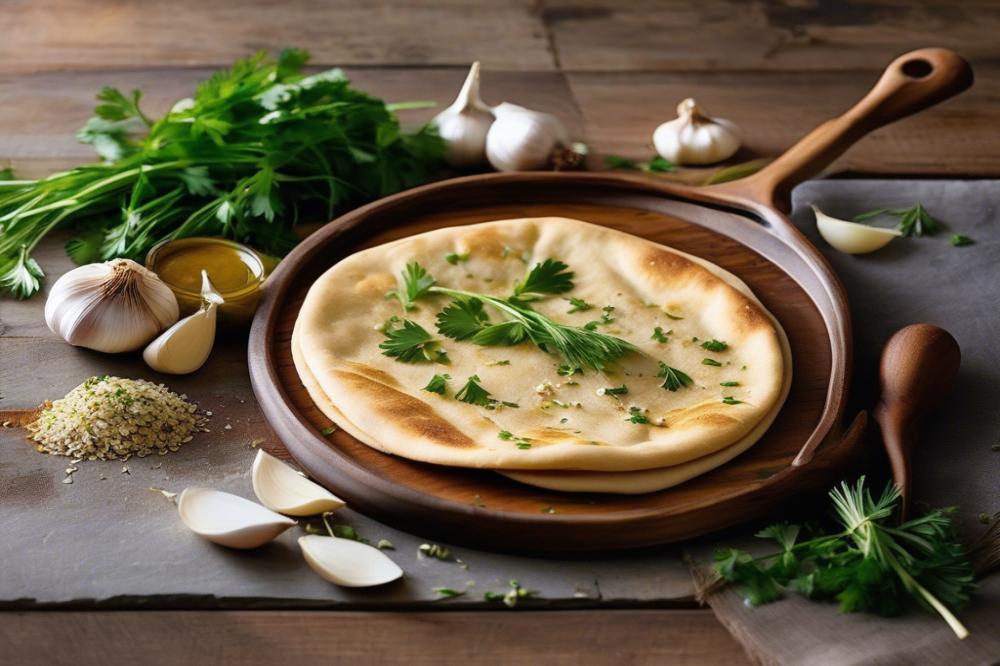Exploring the Flavors of Lebanese Fish Sayadieh
Lebanese Sayadieh is a delicious dish that beautifully blends fish with rice pilaf. This meal holds a special place in the heart of Lebanese culinary culture. It represents both tradition and a deep connection to the sea. With a coastline along the Mediterranean, Lebanon enjoys an abundance of fresh seafood. These ingredients inspire many fish recipes that celebrate the region’s rich flavors.
The importance of Sayadieh goes beyond just taste; it reflects the heritage and daily life of the Lebanese people. Families often gather to enjoy this dish, creating memories that tie generations together. The preparation involves traditional cooking methods, showcasing the skills passed down through time.
Spices play a critical role in enriching the dish. A blend of cumin, cinnamon, and other spices work in harmony, creating an aromatic experience. Caramelized onions add a sweet depth, balancing the flavors with their rich texture. A splash of lemon brightens the overall taste, making each bite fresh and vibrant.
Lebanese Sayadieh encapsulates the essence of Mediterranean flavors, celebrating both land and sea. This unique blend speaks to the heart of Middle Eastern cuisine, highlighting the region’s commitment to using fresh and wholesome ingredients. As one experiences this dish, it becomes clear that Sayadieh is more than just food; it is a vibrant expression of a culture deeply connected to its roots.
Lebanese Sayadieh

Sayadieh is a popular fish dish in Lebanon. It has a rich history that connects it to the Mediterranean region. Traditionally, this dish features flavorful seafood, often made with fresh catch from the sea. Its origins can be traced back to coastal communities where fishing was a vital part of daily life. The way Sayadieh is prepared showcases the essence of Lebanese culinary culture in mouthwatering fashion.
Historical Significance
This dish is more than just a meal; it symbolizes the heritage of those who live by the sea. Families have passed down recipes through generations. Many believe that Sayadieh reflects the resourcefulness of Lebanese people. They utilize simple yet effective techniques to craft a dish that resonates with nostalgia. It embodies a connection to the land and sea, portraying a way of life tied to natural resources.
Role in Middle Eastern cuisine
Within Middle Eastern cuisine, Sayadieh stands out for its savory flavors. It not only highlights fish but also the importance of spices and herbs in cooking. Rice pilaf accompanies this dish, adding a comforting base to absorb the wonderful flavors. Caramelized onions provide a sweet contrast, making each bite memorable. Lemon juice is often drizzled on top, brightening the dish and enhancing its taste. As a result, Sayadieh invites everyone to experience the Mediterranean flavors tailored to local preferences.
Variations Across Regions in Lebanon
Different regions of Lebanon boast their unique twists on Sayadieh. Coastal areas may use various types of fish, reflecting the local catch available at the time. Some use saffron or pine nuts to elevate their version, while others stick closely to traditional recipes. Moreover, the method of cooking varies; some prefer to bake, while others fry the seafood. Each variation tells a story about the people, their customs, and their relationship with food. Regardless of the changes, the heart of Sayadieh remains deeply rooted in Lebanese culture.
Ingredients and Cooking Instructions

List of Ingredients with Quantities
- 2 cups long-grain rice
- 1 kg fish (preferably snapper or sea bass)
- 1 large onion (sliced)
- 4 cloves garlic (minced)
- 1 teaspoon cumin powder
- 1 teaspoon coriander powder
- 1 teaspoon paprika
- 1 teaspoon black pepper
- 1 teaspoon salt
- 1/2 cup olive oil
- 4 cups fish broth or water
- Juice of 2 lemons
Cooking Instructions
Start by rinsing the rice thoroughly under cold water. Allow it to soak for about 30 minutes. This step helps prepare the rice for cooking, ensuring a fluffy texture. Next, heat the olive oil in a large pot over medium heat.
Once the oil is warm, add in the sliced onions. Cook them until they are beautifully caramelized, turning a golden brown. Their sweetness will enrich the dish. After that, add the minced garlic along with cumin, coriander, paprika, black pepper, and salt.
Let the mixture cook for a few minutes. Stir everything to release the aromas. Now, it’s time to introduce the soaked rice. Stir it in, making sure every grain is coated with the rich oil and fragrant spices.
Pour the fish broth or water into the pot. Bring it to a rolling boil, then reduce the heat to low. Cover the pot and let it simmer until the rice is tender and the liquid is absorbed.
As the rice cooks, focus on preparing the fish. Season your fish generously with salt and pepper. You can grill or fry it, based on your preference. Cooking it until cooked through brings out the delightful Mediterranean flavors.
Serve the rice pilaf hot, topped with the fish. Don’t forget to drizzle fresh lemon juice over the top. This final touch brightens the dish and adds to its unique taste. Each bite represents a celebration of heritage and history in Lebanese cuisine.
Nutritional Information
Rice provides carbohydrates that fuel the body. Already known for its health benefits, fish offers an excellent source of protein and omega-3 fatty acids. Olive oil adds healthy fats to the meal, promoting heart health. The spices used enhance the flavor of this dish without adding extra calories, making it a wholesome option.
Cultural Significance

Sayadieh holds a special place in Lebanese heritage. This dish is more than just food; it represents tradition and pride. Family gatherings often feature Sayadieh, bringing people together around the table. Originating along the Lebanese coastline, it showcases the rich bounty of the sea. Seafood is a crucial element of this meal, linking it deeply to coastal life.
Cooking this dish requires skill and patience. Fresh fish, typically caught that day, is the star of the show. The preparation involves using spices and caramelized onions, which infuse the meal with incredible flavors. Rice pilaf accompanies the fish, soaking up the delightful essence of the spices. A splash of lemon at the end enhances the overall taste, providing a refreshing balance.
This meal goes beyond mere sustenance. Hosting friends or family typically includes serving Sayadieh. Sharing this dish is a sign of Lebanese hospitality, welcoming everyone with open arms. The Mediterranean flavors remind guests of the region’s vibrant culinary culture. Recipes are often passed down through generations, making every serving a link to the past.
Tradition plays a significant role in how Sayadieh is prepared. Many families have their own special techniques, creating a sense of identity. Whether it’s a holiday or a simple gathering, the dish shines at any occasion. Savoring each bite becomes a shared experience. It is a celebration of community and togetherness in Lebanese life.
Flavor Profile

The spices used in Sayadieh offer an intriguing glimpse into the heart of Lebanese culinary culture. Cumin, coriander, and turmeric are prominent. Their mingling creates a warm and inviting aroma that envelops the dish. Furthermore, a hint of allspice adds depth and a subtle complexity.
Savory and tangy notes balance beautifully on the palate. The seafood, often freshly caught, brings a touch of the Mediterranean to the plate. Lemon plays a crucial role too. It brightens the flavors and complements the richness of the fish. Each bite delivers not just taste but a journey through heritage and tradition.
Fresh ingredients are vital to Sayadieh’s allure. The quality of the fish matters immensely. Locally sourced seafood ensures that the dish remains authentic. Rice pilaf, often accompanied by caramelized onions, absorbs the savory juices. This combination enhances the overall experience, making it distinctly Lebanese.
Additionally, traditional cooking methods are prevalent in preparing Sayadieh. Slow cooking allows the ingredients to meld and develop richness. The result is a dish that showcases the essence of Middle Eastern cuisine. It invites diners to savor each flavor and appreciate its roots.
Pairing and Serving Suggestions
Recommended Side Dishes to Complement Sayadieh
Fresh sides enhance the meal’s balance. Consider a simple tabbouleh salad. This dish, made from parsley, mint, and tomatoes, adds a crisp, refreshing bite. Another great option is a Mediterranean-style rice pilaf. The fluffy grains, often flavored with aromatic spices, make a lovely base. Caramelized onions also work well. Their sweetness brings out the fish’s savory notes, creating a perfect harmony.
Appropriate Beverages and Accompaniments
When choosing beverages, think about the flavors involved. A chilled glass of arak complements Sayadieh beautifully. This anise-flavored spirit carries the essence of Middle Eastern cuisine. For non-alcoholic options, consider freshly squeezed lemon mint juice. The citrusy burst is quite refreshing, especially on a warm day. For a softer taste, yogurt-based drinks like ayran offer a cooling contrast to the spices in the dish.
Suggestions for Garnishing and Presentation
Presentation can elevate the dining experience. Garnish the plate with thin lemon wedges or slices. They provide a burst of color that brightens the dish visually. Fresh herbs can add a lovely touch as well. Sprinkling chopped parsley or cilantro gives a fragrant lift. A drizzle of olive oil enhances the Mediterranean flavors enticingly. Lastly, serve with warm pita bread on the side. This bread is great for scooping and soaking up the flavors, drawing from Lebanese heritage and tradition.
Reflecting on the Richness of Lebanese Sayadieh
Lebanese Sayadieh holds a significant place in the heart of Middle Eastern cuisine. This beloved dish showcases the rich flavors and traditions of Lebanon’s coastal areas. Each bite tells a story of the sea, blending fragrant spices with tender fish and savory rice. The balance of flavors makes it a true favorite among seafood lovers.
Exploring traditional recipes can be a rewarding experience. Families have passed down these culinary treasures for generations. Trying your hand at making Sayadieh brings you closer to the cultural heritage of Lebanon. Recipes can vary and adapting them may lead to discovering personal touches that resonate with your taste.
Enjoying Mediterranean flavors at home can enrich your cooking journey. Gather fresh ingredients and embrace the opportunity to cook a meal that reflects vibrant tastes. Sharing these dishes with family or friends creates memorable moments. The warm aroma of spices and seafood filling your kitchen might inspire others to appreciate the diversity of flavors from this region.
In the end, preparing Sayadieh is more than just a meal; it’s a celebration of culture and community. Let the simplicity of the dish encourage you to explore more culinary adventures. There is a world of flavors waiting to be uncovered in your own kitchen. Dive in and enjoy the culinary exploration!



